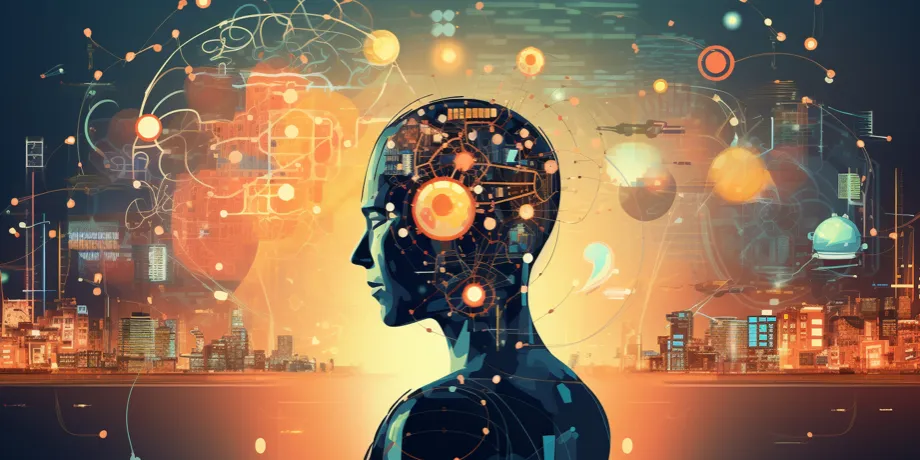-
Contents
- The Power of AI Assistants
- The Technical Foundation of AI-powered Assistants
- Estimations for Development
- Conclusion

The Power of AI Assistants
AI-powered assistants leverage the capabilities of artificial intelligence, natural language processing, and machine learning to engage in human-like conversations with customers. These intelligent virtual assistants can understand customer inquiries, provide accurate and relevant responses, and offer personalized recommendations. By simulating human conversation, assistants enhance customer satisfaction, streamline information flow, and automate repetitive tasks.
Efficient Customer Interactions
Traditional customer communication methods often involve manual handling of inquiries, leading to delays, inconsistencies, and limitations in scalability. AI-powered assistants provide a scalable and efficient solution by handling a high volume of inquiries simultaneously. With quick response times and accurate information delivery, assistants offer seamless customer interactions, ensuring that customers receive timely assistance and support.
Personalized Experiences
One of the key advantages of AI-powered assistants is their ability to deliver personalized experiences. By analyzing customer data and understanding individual preferences, assistants can tailor their responses and recommendations to each customer’s unique needs. This personalized approach enhances customer satisfaction, fosters engagement, and strengthens brand loyalty.
24/7 Availability
Unlike traditional customer support channels with limited operating hours, assistants are available 24/7, offering round-the-clock support to customers. This accessibility ensures that customers can receive assistance and information whenever they need it, regardless of time zones or geographical locations. Assistants eliminate the frustration of waiting for business hours and empower customers with instant access to support and information.
Improved Operational Efficiency
Implementing AI-powered assistants can significantly improve operational efficiency for businesses. By automating repetitive tasks, assistants free up human resources, allowing employees to focus on more strategic and value-added activities. Assistants can handle routine inquiries, provide self-service options, and assist customers in finding information, reducing the workload on customer support teams.
Continuous Learning and Improvement
AI-powered assistants continuously learn and improve through machine learning algorithms. They analyze customer interactions, gather feedback, and adapt their responses to improve accuracy and relevance over time. By leveraging customer data and feedback, assistants can continuously refine their understanding of customer needs, resulting in more effective and satisfying interactions.
Future Possibilities
The potential of AI-powered assistants extends beyond their current capabilities. As AI technology advances, assistants can evolve to handle complex tasks such as sales assistance, product recommendations, and even voice-based communication. Integration with emerging technologies like augmented reality and virtual reality can create immersive and interactive customer experiences, further enhancing engagement and satisfaction.
The Technical Foundation of AI-powered Assistants
AI-powered assistants rely on a combination of cutting-edge technologies, including natural language processing (NLP), machine learning (ML), and deep learning. These technologies enable assistants to understand and interpret natural language queries, identify intent, and generate accurate and contextually relevant responses. NLP algorithms analyze the structure and meaning of sentences, while ML algorithms train assistants on vast amounts of data to improve their understanding and response generation capabilities.

Conversational Flow and Dialogue Management: The conversational flow of AI-powered assistants is meticulously designed to mimic human conversation. Dialogue management systems orchestrate the interaction between the chatbot and the customer, ensuring a seamless and engaging conversation. These systems use techniques such as rule-based systems, state tracking, and reinforcement learning to manage the flow of dialogue, handle multi-turn conversations, and provide coherent responses.
Knowledge Base Integration: AI-powered assistants leverage knowledge bases to enhance their understanding and information retrieval capabilities. These knowledge bases can include proprietary data, public databases, FAQs, product information, and more. By integrating knowledge bases, assistants can access accurate and up-to-date information to provide detailed answers, offer personalized recommendations, and assist customers with their inquiries.
Backend Processing and Integration: The backend of AI-powered assistants involves complex data processing and integration. Assistants often integrate with various systems, databases, and APIs to access and retrieve relevant information in real-time. This integration allows assistants to pull data from customer profiles, transaction history, or external sources, enriching their responses and providing personalized experiences. Backend processing also involves handling data privacy and security to ensure the protection of sensitive customer information.
Continuous Learning and Improvement: AI-powered assistants continuously learn and improve through a process called machine learning iteration. Assistants analyze user interactions and feedback, leveraging ML algorithms to adapt and refine their responses over time. This iterative learning process helps assistants understand user preferences, improve response accuracy, and enhance customer satisfaction. Techniques like reinforcement learning enable assistants to learn from positive and negative feedback, optimizing their performance and understanding of customer intent.
Deployment and Integration: AI-powered assistants can be deployed on various platforms, including websites, messaging applications, and mobile apps. They are seamlessly integrated into existing customer communication channels, providing a consistent and unified experience across different touchpoints. Integration with customer relationship management (CRM) systems and backend databases enables assistants to access customer data, history, and preferences, ensuring personalized and contextualized interactions.
The role of GPT Models in the development of AI Assistants
One crucial element in the development of AI-powered chatbots and virtual assistants is the utilization of powerful language models like the Generative Pre-trained Transformer (GPT) models. GPT models have demonstrated remarkable capabilities in natural language processing, understanding context, and generating human-like text. These models have significantly contributed to the advancement of conversational AI by enabling chatbots to engage in meaningful and contextually relevant conversations with users.
GPT models serve as the foundation for the conversational capabilities of AI assistants. They have been trained on vast amounts of text data from diverse sources, allowing them to acquire a deep understanding of language patterns, semantics, and contextual nuances. By leveraging GPT models, AI assistants can generate responses that are not only grammatically correct but also coherent and contextually appropriate.
The integration of GPT models with AI assistants enables them to provide accurate and informative answers to user queries, offer personalized recommendations, and engage in interactive conversations. These models have the ability to analyze user input, extract relevant information, and generate responses that closely resemble human language, fostering a more natural and engaging user experience.
Moreover, GPT models can be fine-tuned and customized to align with specific domains or industries. This fine-tuning process involves training the model on domain-specific data, allowing it to acquire specialized knowledge and vocabulary related to a particular field. This enables AI assistants to provide tailored and industry-specific information, making them invaluable tools for businesses operating in niche markets.
However, it’s important to note that GPT models are not infallible and may occasionally generate incorrect or nonsensical responses. As such, careful monitoring, testing, and continuous improvement are necessary to ensure the accuracy and reliability of AI assistants powered by GPT models. Regular updates and maintenance of the model, combined with user feedback and human oversight, can help mitigate potential issues and enhance the overall performance of AI assistants.
Estimations for Development
The development of AI-powered assistants involves various factors that impact the estimation process. Some key considerations include:
- Gathering Requirements: A thorough understanding of the project requirements, including conversational flow, knowledge base integration, backend systems, and integrations with existing platforms.
- Architecture Design: Designing the AI-powered chatbot’s architecture, including frontend interfaces, backend processing, integration with databases and APIs, and deployment considerations.
- Development and Testing: Implementing the designed architecture, developing the frontend and backend components, integrating with external systems, and conducting rigorous testing to ensure the chatbot’s functionality and performance.
- Training and Data Preparation: Collecting and preparing relevant data for training the chatbot, building the knowledge base, and fine-tuning the ML models to enhance response accuracy and relevance.
- Integration and Deployment: Integrating the developed AI-powered chatbot into the desired platforms, such as websites, messaging applications, or mobile apps. This includes ensuring compatibility, seamless integration with existing systems, and thorough testing to guarantee a smooth deployment process.
- Continuous Improvement and Maintenance: Implementing mechanisms for ongoing monitoring, data analysis, and performance optimization of the chatbot. This involves regularly updating the chatbot’s knowledge base, refining its responses based on user interactions, and addressing any issues or bugs that may arise.
Estimating the development timeline and cost for AI-powered assistants depends on the complexity of the project, the desired features and functionalities, the size of the knowledge base, and the level of integration required. Typically, the development process can span several weeks to months, with iterative cycles for testing and refinement.
As for cost, it is influenced by factors such as the scope of work, the size of the development team, and the level of expertise required. It is important to consider the upfront development costs as well as ongoing maintenance and support costs to ensure the long-term success of the chatbot.
Conclusion
AI-powered assistants represent a technical breakthrough in customer communication, leveraging advanced technologies such as NLP, ML, and deep learning. With their conversational flow, knowledge base integration, continuous learning capabilities, and seamless integration into existing systems, assistants are poised to revolutionize customer interactions across industries. By embracing AI-powered assistants, businesses can enhance customer satisfaction, improve operational efficiency, and deliver personalized experiences in the digital age.



